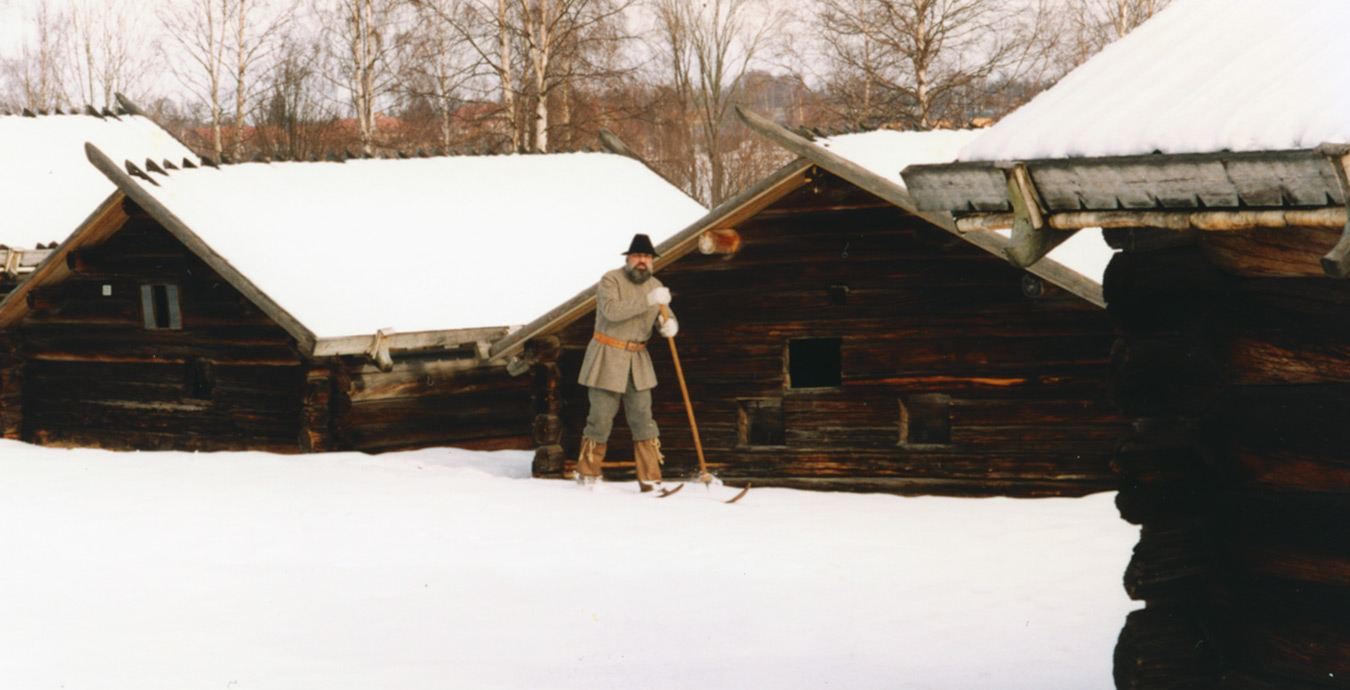Vasaloppet’s history begins as early as 1520. Then Sweden was in a union with Denmark. Discontent with the Danish king was great, not least from Gustav Eriksson Vasa, whose opposition had resulted in his being imprisoned in Denmark. But the 24 year old Gustav managed to escape. After landing south of Kalmar in the spring of 1520 he began a long and dangerous march north. On his way, Gustav urged farmers and villagers to revolt against the Danish authorities, but to no avail. He then set his hopes on Dalarna, where the people were known to be tough and resolute, seldom giving way to decisions of authorities and kings. Gustav was hunted throughout Dalarna by the pursuing Danes, but the people sheltered and protected him from King Christian’s soldiers.
After a month fleeing through Dalarna, Gustav stood outside the church in Mora and spoke to the crowd. Only weeks before, his father and his brother together with some 80 other magnates had been beheaded in ”Stockholm’s bloodbath”. Gustav asked how long they could accept such atrocities and urged them to take up arms. But the people wanted to confer with the neighbouring villages before deciding on war.
The Danes were in close pursuit and, before he could get the answer he wanted, Gustav was forced to take to his skis and continue his flight west towards Norway. A few days later news of King Christian’s brutal ravages throughout Sweden reached Mora, the people regretting then that they had not immediately supported Gustav. Mora’s two best skiers, Lars and Engelbrekt, sent in hot pursuit of the fugitive Gustav Vasa, caught up with him in Sälen. Gustav was persuaded to return with them to Mora to lead the fight against King Christian.
Peder Svart’s story (written around 1560) about Gustav Eriksson in Dalarna in December 1520 goes like this:
Winter in Dalarna, December 1520
”Gustav arrives to Rankhyttan, disguised as a farmer. A maid spots the gold-knit collar under his rags and collects Anders Persson (the owner of Rankhyttan) who recognizes Gustav from his study days in Uppsala. Gustav tells him of escaping King Christian II’s captivity, and of the Stockholm Bloodbath. Anders Persson is friendly but does not want trouble; he asks Gustav to leave.
The day after, Gustav arrives in Ornäs and makes himself known to Arent Persson. Arent Persson promises to help him but instead goes to King Christian’s men to tell them that the fugitive Gustav is in Ornäs. Arnet’s wife suspects this betrayal. She warns Gustav, gives him a horse, carriage and servant. He goes to Reverend Jon in Svärdsjö, another old classmate, and rests there for a week.
In Rättvik Gustav speaks to the farmers and wants to know what they think of the Danish tyranny. They reply that they’d like to offer the Danes resistance, but not without hearing what farmers in other parishes think.
Gustav heads to Mora to speak to the people there. At the same time the Danish steward Henrik von Melen sends men to Mora to kill Gustav, or at least capture him. Instead Gustav kills one of them. During the Christmas weekend 1520 Gustav speaks to the people of Mora, tells them what the Danes have done, and reminds them how Danes tend to react. Do they wish to stand with him and stop the oppression? The people of Mora say no, they are loyal to King Christian. Gustav leaves Mora and heads for Norway through western Dalarna.
While Gustav was in Mora, King Christian’s men came to Rättvik. The farmers overpowered them but released them after getting their assurance that they meant Gustav no harm; they had been forced to chase him. A week after Gustav leaves Mora, news arrives that King Christian will tour the country as per tradition. He’s had gallows raised at each bailiff’s farm.
Shortly afterwards, reports of the Stockholm Bloodbath reach Mora. The people of Mora regret turning Gustav away. Day and night some Dalarna men ski after Gustav, to catch up before he reaches Norway. They find him in Lima and promise him not only their allegiance, but also their lives if he will accompany them back to Mora. Gustav comes with them and is named, by all of Dalarna’s most prominent parishes, Sweden’s military commander.”
In 1521, with the men from Dalarna at the head, Gustav began his battle. It took two and half years before the war was over and Sweden was a free land. On 6 June 1523 at a national assembly in Strängnäs, Gustav Eriksson Vasa was elected king of a free Sweden. Now he is a symbol for the world’s biggest ski competition – Vasaloppet!
The page was updated 2022-09-21





